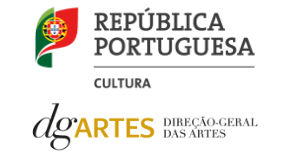Tracks and Traces of Violence
Representation and Memorialisation of Violence in Art, Literature and Anthropology in Africa.
Conference of Bayreuth International Graduate School of African Studies (BIGSAS), University of Bayreuth (Germany), 14th – 16th July 2011
We invite BIGSAS PhD students and PIs and members of our partner universities as well as other interested scholars, PhD students and artists to send their proposals in English or in French.
Following up on an interdisciplinary workshop of BIGSAS and UKZN on the interrelations between literary studies and anthropology, this conference zooms in on a specific phenomenon: violence. According to Achille Mbembe (2001) it is possible to “follow the trail of violence” that marks African history from the violence implicated in the colonial experience to the pluralistic chaos that characterizes the post-colony. From its moments of founding, through conquests, to its dictatorial self-arrogation as the sole source of power and law, colonization rested on violence, and some practices of “Commandment” are in continuity with colonial power.
The cultural, social and individual medialization of lived experiences are often shaped and inspired by those violent events. Visual artists and writers from Africa have come to deal with these violent events of the recent past and the present like the 1994s Rwandan genocide, the brutalities of the apartheid regime in South Africa or the liberation and civil wars in countries like Algeria, Mozambique, Angola or DR Kongo. By means of artistic practice they, often as both representatives and witnesses, struggle to find ways to engage with the traumas and atrocities of conflict and war of post- colonial African states and attempts towards reconciliation. Veronique Tadjos literary meditation on the Rwandan genocide can be regarded an example for this. Memory and violence have also become one of the key topics in cultural studies and literature studies from the 1990s on. Particularly the efforts of Jan and Aleida Assman have largely been adopted by other disciplines like art history, cultural studies, literature studies and anthropology (e.g. Boltanski (1999), Bennett (2005), Douglas and Vogler (2003), Chouliaraki (2006), Poggenpoel (2003), Goodwin and Attias (1999), Wood
(1999), Terr (1990)).
Main aims
In the growing tradition of joint workshop of BIGSAS and its partners, we aim at ‘doing interdisciplinarity’ with the special focus on medializations of violence. This conference invites papers dealing with tracks and traces of violence in – but not restrictively- artistic and literary practices as well as in anthropological works.
Guiding questions are: How is violence displayed, scandalized, and documented in art and literature as well as anthropological writing? How have artists and writers responded to individual or collective trauma through an engagement with the arts? How is this violence and trauma ‘written into being’? How does migration change the image of violence/trauma?
We welcome papers interrogating topics including
* archives and its role in the process of memorization, re-membering, dis-membering, amnesia and mnemocide
* the human body as carrier of ‘somatic memory’, first-hand testimony and witness of violence; spatial structures as memorials and other buildings constructed as places of memorialisation and as ‘architectures of trauma’ or ‘landscapes of memory’
* potentially violent processes of research itself, the relationships between writer/artist and subject, anthropologist and informant, and where violence comes into play for example in translation as possible ethnocentric violence.
* visualizations and writings on violence and memories of violence
Organizers
BIGSAS-Workgroup Tracks and Traces of Violence: Viviane Azarian, Katharina Fink, Amber Gemmeke, Moulay Driss El Maarouf, Maroua El Naggare, Samuel Ndogo, Omanga Duncan Mainye, Nadine Siegert

